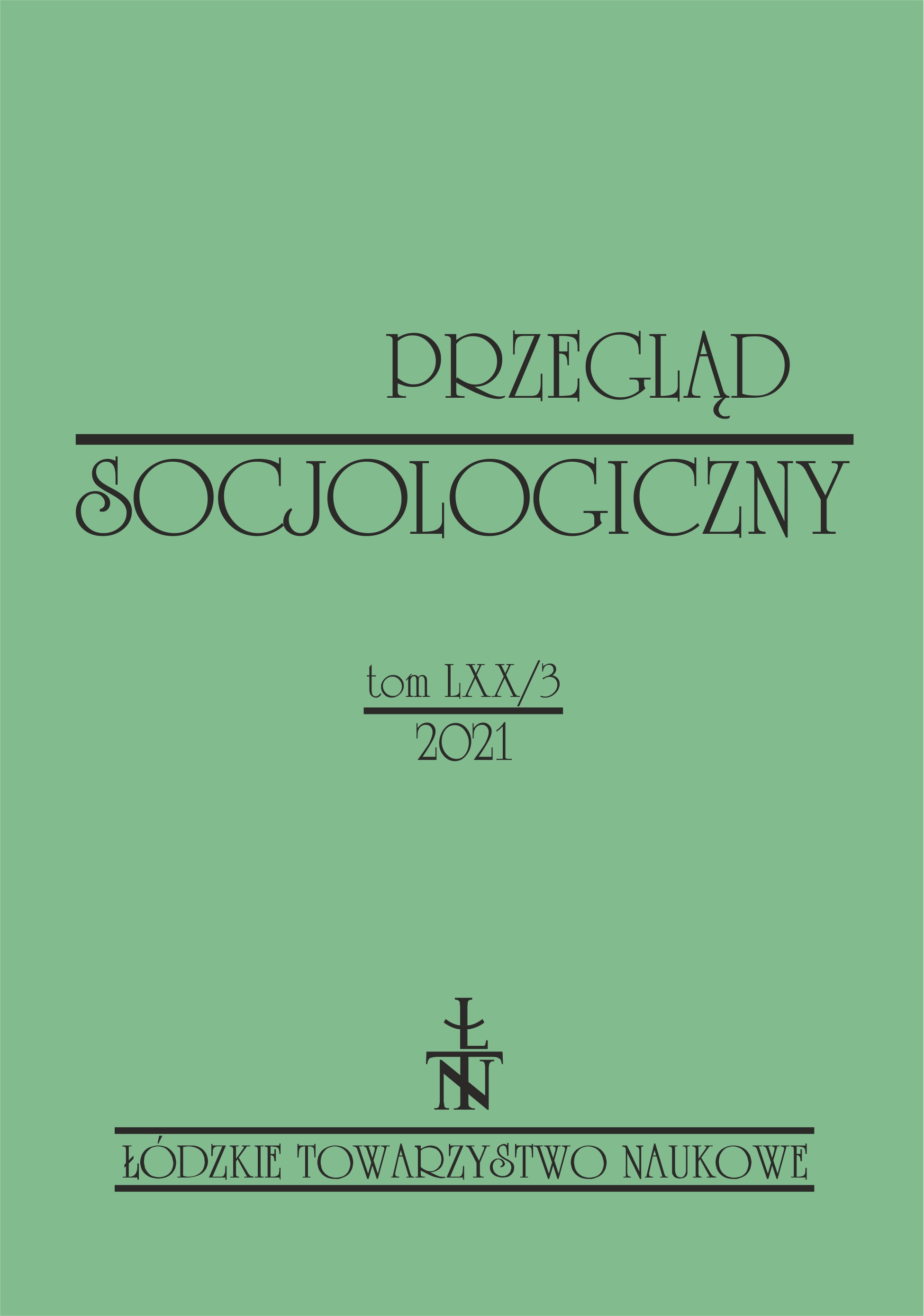The risk of excluding people with sensory disabilities from education as a consequence of the COVID-19 pandemic
DOI:
https://doi.org/10.26485/PS/2021/70.3/3Keywords:
students, sensory disability, online education, COVID-19 pandemicAbstract
The authors refer to the risk of people with sensory disabilities dropping out of higher education in Poland due to the move towards online learning during the COVID-19 pandemic. They present information on the unique situation of students with sensory dysfunctions, refer to the issues of distance learning in higher education, and present the methodological assumptions behind their research. The outcome of the research and observations resulting from the authors’ practical experiences allowed them to formulate conclusions that relate to various areas of distance learning, including technology and methodology, the social-psychological area, the need for equipment, the evaluation of distance education and its negative vs positive aspects. This allowed them to reveal certain aspects of online learning of people with disabilities associated with the need to further explore the issues raised in theoretical, empirical, and practical dimensions.
References
Bernard Alec, Sara Weiss, Moshiur Rahman, Sheryl S. Ulin, Clive D'Souza, Anah Salgat, Kate Panzer, Joshua D. Stein, Michelle A. Meade, Michael M. McKee, Joshua Ehrlich. 2021. “The impact of COVID-19 and pandemic mitigation measures on persons with sensory impairment”. American Journal of Ophthalmology https://doi.org/10.1016/j.ajo.2021.06.019
Błeszyński Jacek. 2006. Alternatywne i wspomagające metody komunikacji. Kraków: Impuls.
Czerwińska Kornelia. 2014. Uczeń z niepełnosprawnością wzroku we współczesnej przestrzeni edukacyjnej. In: Podmioty, środowiska i obszary edukacyjne. Wyzwania i zagrożenia połowy XXI wieku. M.Suświłło, Fechner N.A. (eds.), 229-243. Poznań: WSB Publishing House.
Czerwińska Kornelia. 2016. „Funkcjonowanie osoby stopniowo tracącej wzrok w przestrzeni edukacyjno-rehabilitacyjnej”. Forum Pedagogiczne 2016(1): 167-180.
Domagała-Zyśk Ewa. 2013. Wielojęzyczni. Studenci niesłyszący i słabosłyszący w procesie uczenia się i nauczania języków obcych. Lublin: KUL Publishing House.
GUS. 2020. Szkolnictwo wyższe i jego finanse w 2019 roku. https://stat.gov.pl/obszary-tematyczne/edukacja/edukacja/szkolnictwo-wyzsze-i-jego-finanse-w-2019-roku,2,16.html [access: 10.11.2020].
Klyszcz Lucjan. 2007. Niewidomi i słabowidzący studenci uczelni wyższych w roku akademickim 2005/2006. Kraków: Fundacja Instytut Rozwoju Regionalnego.
Krakowiak Kazimiera. 2012. Dar języka. Podręcznik metodyki wychowania językowego dzieci i młodzieży z uszkodzeniami narządu słuchu. Lublin: KUL Publishing House.
Marcinkowski Artur, Przemysław Marcinkowski. 2012. WCAG 2.0. Podręcznik dobrych praktyk. Warszawa: Fundacja Widzialni.
Meleo-Erwin Zoe, Betty Kollia, Joe Fera, Allyssa Jahren, Corey Basch. 2021. “Online support information for students with disabilities in colleges and universities during the COVID-19 pandemic”. Disability and Health Journal 14 (2021)101013, DOI: 10.1016/j.dhjo.2020.101013.
Męcfal Sylwia, Adrianna Surmiak, Izabela Ślęzak. 2020. (editors of the volume). „Badania społeczne i humanistyczne w czasach pandemii – aspekty etyczno-metodologiczne. Dyskusja podczas „Spotkań Badaczek”. Przegląd Socjologiczny 69(3): 203–214.
Muller-Siekierska Diana. 2019. Style funkcjonowania młodych osób z uszkodzeniami słuchu w bliskich relacjach interpersonalnych. Łódź: Uniwersytet Łódzki Publishing House.
Richardson John T.E., Gary L. Long, Alan Woodley. 2004. “Students with an undisclosed hearing loss: A challenge for academic access, progress, and success?”. Journal of Deaf Studies and Deaf Education 9(4): 427-440.
Rzepka Henryk. 2007. Studenci niewidomi i słabowidzący – poradnik dla wyższych uczelni. Kraków: Fundacja Instytut Rozwoju Regionalnego.
Szacka Barbara. 2003. Wprowadzenie do socjologii. Warszawa: Oficyna Naukowa.
Taddei Arianna, Esmeralda Azahar López, Rebeca Abigail Recinos Reyes. (2021). “Children with hearing disabilities during the pandemic: Challenges and perspectives of inclusion”. Education Sciences & Society - Open Access 12(1), DOI: 10.3280/ess1-2021oa11871.



